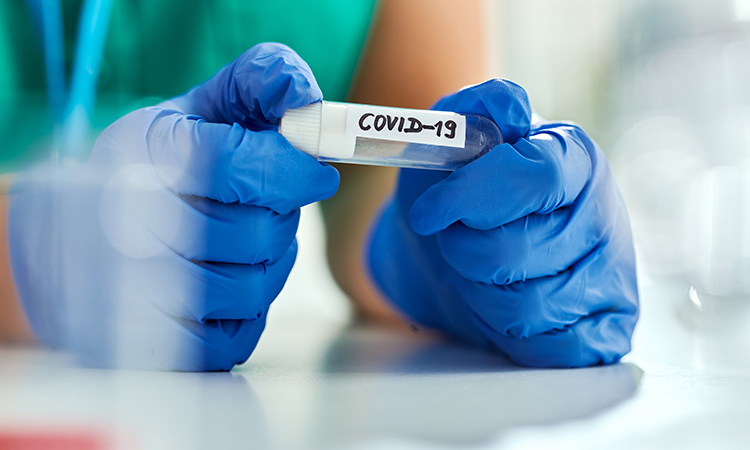
According to the World Health Organization, all viruses can change over time. That includes SARS-CoV-2, the virus responsible for covid19 infections. A virus replicates itself into copies that have slight changes called mutations. Variants are viruses with a single or several mutations of the original. Usually, the changes (virus evolution) result in variants better adapted to the environment than the original.
Many variants of the SARS-CoV-2 have emerged, leading to concerns about transmissibility and resistance to treatment and vaccines. That’s why it is important to prioritize regular testing. You can choose to order lateral flow tests online if you want to get faster results. Antigen tests have been very instrumental in detecting variants and tracking their spread. This article delves into how they are adapted to keep up with COVID-19 evolution.
Targeting Conserved Antigens
One of the most effective strategies in ensuring the effectiveness of antigen tests in detecting coronavirus and its variants is targeting conserved antigens. These parts of the COVID-19 virus are known to stay relatively stable across various variants. In this case, the spike protein and the nucleocapsid protein are the two main targets in the antigen tests.
Targeting proteins that enhance the virus’s structure and function helps maintain the tests’ sensitivity (capacity to identify positive cases correctly). Rapid antigen tests are powerful as they can detect the virus early, even before the patients start experiencing symptoms. That helps in lowering the risk of transmission.
Regular Test Validation
To ensure that antigen tests are up to date with the evolution of COVID-19, there has to be regular test validation. The diagnostic tests’ performance can get affected due to the changes in the virus’s genetic makeup. That is why manufacturers, regulatory agencies, and healthcare institutions monitor how efficiently the tests detect the virus. With validation studies, it is possible to assess the ability of tests to correctly detect positive and negative cases (sensitivity and specificity). Validation studies can tell whenever there is a decrease in sensitivity because of mutations.
Monitoring and Surveillance
Public health agencies are beneficial in conducting continuous surveillance that helps them monitor the emergence of new variants and how fast they are spreading. The data they collect helps test manufacturers and researchers to understand the new variants and figure out the regions in which they are prevalent for them to make the necessary adjustments to their strategies.
Combined Testing Strategies
To keep pace with COVID-19 evolution, public health strategies also involve combining antigen tests with other diagnostic methods. The combination helps in providing complementary information. For initial screening, the best mode of test is the antigen tests as they are rapid. Then there are PCR tests, which may not be so fast but are highly sensitive. PCRS tests can offer detailed genetic and viral information.
The whole world has had to find ways of navigating life post covid, given that completely eradicating the virus has been challenging. People have been forced to find ways to navigate the new normal as they continue their daily lives. Embracing rapid antigen testing has been the game changer in the war against covid 19. They are convenient for testing during public events, school settings, and organizations.
Once the antigen testing results turn positive, it is recommended for a PCR test to be used for follow-up and confirmation purposes. Since they have high sensitivity, they are termed the gold standard for COVID-19 testing during these times of covid 19 evolution. PCR confirmation is also very instrumental in the variant detection process. The tests can identify specific mutations of the emerging variants thanks to their high sensitivity. PCR-positive samples also undergo genomic sequencing to help detect possible variants and monitor their prevalence in certain areas.
Research and Development
Regulatory agencies and manufacturers are always on the move, improving existing antigen tests or developing new ones. They explore novel technologies like getting innovative materials to create test components, improved assay formats, and more sensitive methods for detection.
Through research and development, agencies can identify the best antigen targets that tests should focus on. The process is also important in ensuring that the tests have improved sensitivity. It is important to note that some variants have lower viral load or may have changed in a way that affects the detectability of particular antigens. The research and development process ensures that tests work as expected, even if new variants exist.
Regular Updates
Manufacturers must always keep tabs on the regular updates from regulatory agencies and adhere to them. These agencies offer guidance regarding diagnostic tests and the evolution of the COVID-19 virus. Using the information in the updates, manufacturers can adapt the tests to match the required specificity and sensitivity levels and lower the chances of incorrect diagnosis. That way, tests can successfully detect viruses from variants with lower viral load or mutations that would alter antigen presentation.

Leave a Reply